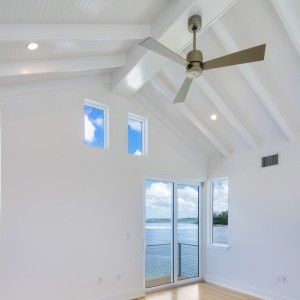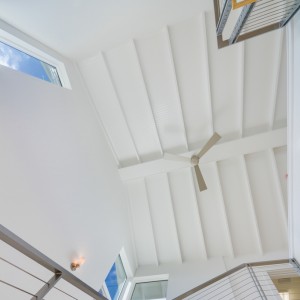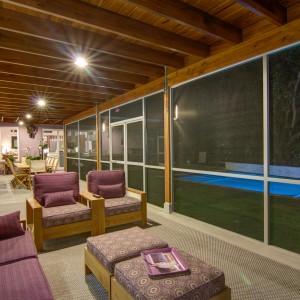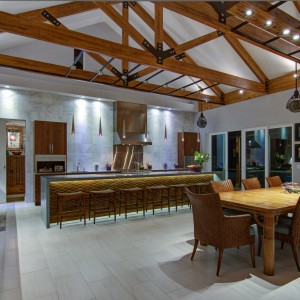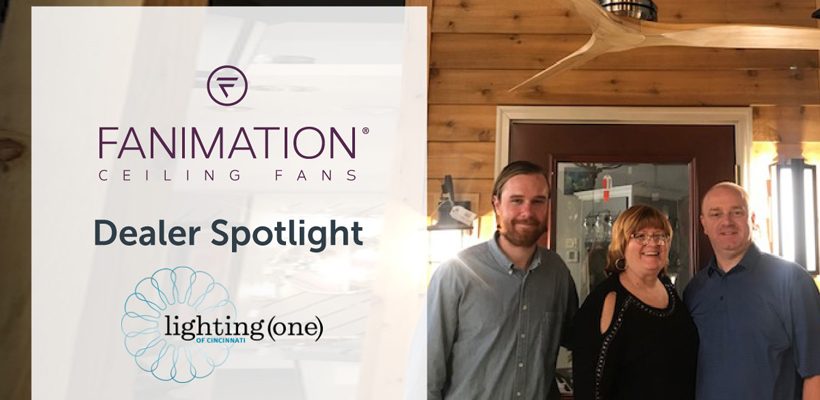One of the ‘coolest’ parts about working at Fanimation is teaming up with world-class designers that specify our fans in their projects. At product inception, we picture a certain way our fans will turn out or how they will be used. Josh Wynne, owner of Josh Wynne Construction, is one of the designers that can do no wrong when it comes to implementing our fans in one of his architectural masterpieces. Our fans find some marvelous places to live after they leave our hands and are placed in Josh’s care. I interviewed him because I wanted to know more about his work, what’s new in green-building, and how he uses fans for LEED Certification. I want Josh to design my home, when I grow up. Without further ado, I give you, Josh Wynne.
Can you tell me a about your professional background?
I started my career in construction as a frame carpenter after honorably serving in the military. It wasn’t long before I owned my own framing company. My work varied from historical restoration work to commercial high rise. I received my class A General Contractor’s license in 2000 and I began to work in light remodel and additions while maintaining three framing crews. Before long I was building semi-custom homes in sub-urban neighborhoods. These homes left me feeling empty, and I could not help but feel as though I was betraying the humble and genuine character of the vernacular designs native to my hometown of Sarasota, FL. I decided that someone needed to build homes that preserved the original design concepts that are the basis of Florida Cracker design. The rest is history.
What does Josh Wynne Construction specialize in?
We are dedicated to building unique homes that have some relationship to either our Florida Cracker vernacular or the modern style that Paul Rudolph implanted here in the 50’s known as the “Sarasota School of Architecture.” All of our homes are sustainable. We do not build mansions and all of our homes are certified by Energy Star, FGBC and the LEED for Homes program. Twice, we have designed and built the highest scoring LEED certified homes in the world (PowerHaus and Codding Cottage). Our other core principle is quality. By building smaller and smarter, my clients can afford a higher level of execution. We are known for our craft approach to construction. My preference is always to build rather than purchase. Unique, Sustainable, Quality. I think that sums up Josh Wynne Construction.
What were some of the inspirations behind the Pearl and the Fish Camp projects?
The Pearl is constructed in a historic bay front community with large lots and an eclectic nature. The lot is truly pie-shaped and is nearly a football field deep. I assisted my client in manifesting a vision for this lot before she purchased it. She is an empty nester and a grandparent with kids and grandchildren in the area. Our effort was to build a home that she could age well in and comfortably house a live-in assistant, if ever necessary. We also needed a place for visiting family to stay. She enjoys her friends and family and likes to have catered events as well. After looking at her art and furnishings, and with knowledge of her lifestyle and the love of the outdoors, I decided to design a courtyard style home. I also implemented minimal frontage that stretched deep into the lot and allowed for lots of indoor/outdoor spaces. Her art and furnishings are of Asian origins reflecting her career overseas so I decided to take a south pacific approach with the roof massing and introduce some Asian elements without getting too “themey.” The shallow depth of the spaces created a passively lit home, and with the help of lots of fans, allowed for passive ventilation and cooling as well. The result is a truly unique home with extraordinarily low energy consumption and a LEED Platinum rating.
The Fish Camp home was designed by Leader Design Studios, with my assistance. Chris Leader’s effort was entirely related to maximizing the use of the oddly narrow lot and allowing for water views from every space in the home. The “Key West” flavor of the home is an effort to be considerate of the very historic neighborhood in which the home was built. The house is on pilings due to its unique designation as a non-coastal Velocity Zone as designated by FEMA. Our client is Scandinavian and he is inherently a modernist, which is reflected in the clean finishes both inside and outside the home. The result speaks for itself. This home is registered LEED Platinum and is awaiting final certification.
How often do you use ceiling fans in your projects?
I grew up in a coastal town. We had no air conditioning in at least one of my homes. The HVAC technology and insulating techniques were poor at best back then. Fans = comfort in my mind. I use fans in every project. Today’s fan technology has come a long way. In tandem with a good design effort, it is possible to live in my area without the use of air conditioning for 9-10 months a year with the assistance of the proper fans in the correct areas.
Can you give me a synapsis of the LEED accreditation process?
LEED is a certification system used to verify, through a third party, how sustainable a building is. The program is administered by the US Green Building Coalition (USGBC). I generally participate in the Homes program which is different than the commercial programs. Homes are inspected through the build process and rated on things such as energy use, moisture control, water management, indoor air quality, site prep, storm water, location and linkage of the site to resources, material considerations and education of the client and the community.
How do ceiling fans help with LEED accreditation?
To participate in the Homes program, we use the DOE’s Energy Star program as a prerequisite to gauge energy performance. Using Energy Star is the preferred path to ultimate energy savings but all fans save energy beyond cooling efforts. Fans also help with moisture control and indoor air quality. The circulation of air helps well-designed HVAC system better filter indoor air contaminants. Beyond a “score-able” value, fans make spaces more comfortable without cooling. That is reason enough for me to specify them liberally.
Why do you use Fanimation fans in your projects?
Fanimation has a great product line. I have found the quality of the products to be second to none. There is a large selection to choose from as well. This is important to me since I rarely build anything similar twice! I have used leather belt driven fans with natural palm leaf blades in my cottage style home, Old Havana ceiling and wall mount fans in my Florida inspired homes, and brushed nickel Zonix fans in my modern homes. I am not sure there is another company out there with that sort of range of options.
Do you have any recommendations for us as a manufacturer?
I would definitely like to see more Energy Star product availability. I like the evolution of the product lines so I have no input there.
How can potential clients contact you?
The best way to make an inquiry is through our website at: www.joshwynneconstruction.com. We also respond via social media outlets on our Houzz page and Facebook page.

